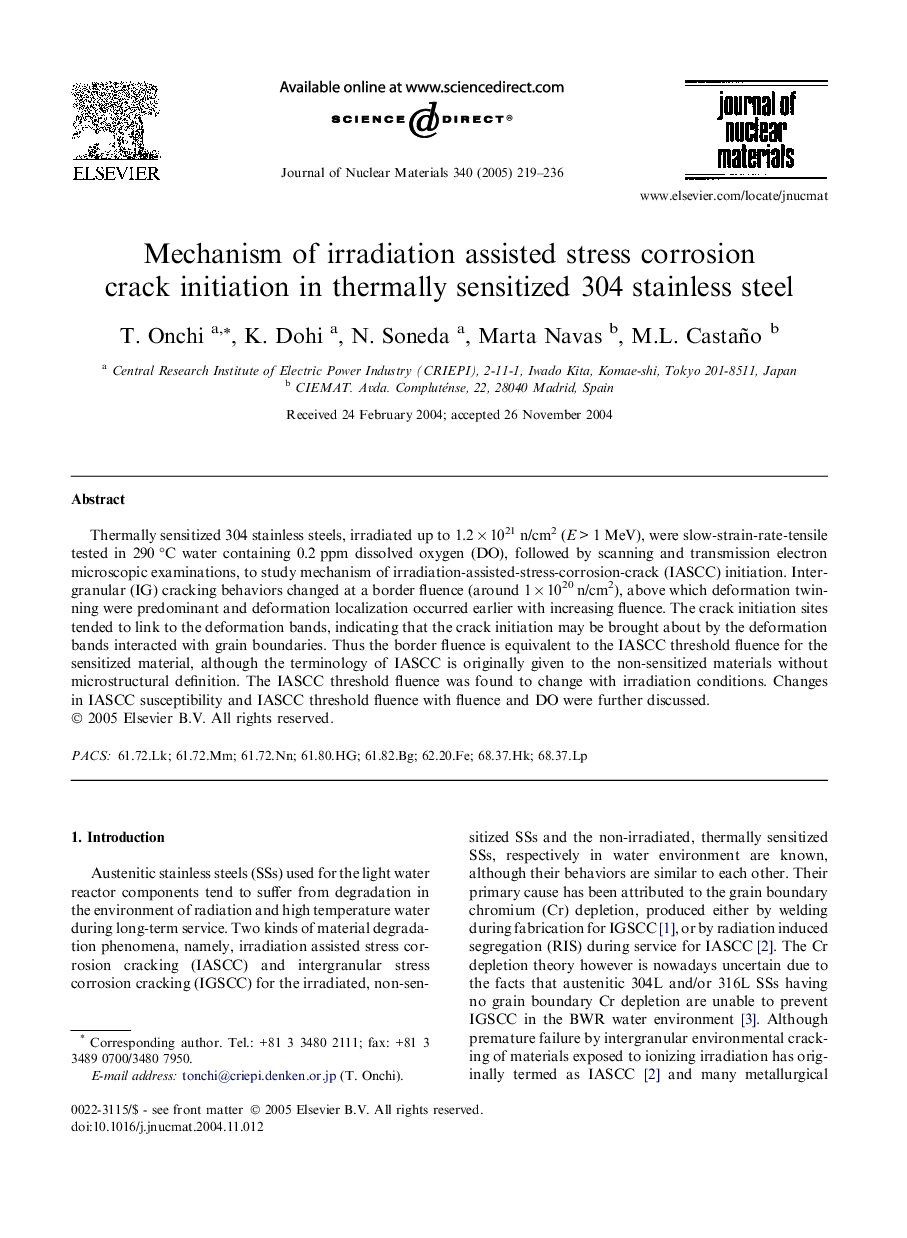| Article ID | Journal | Published Year | Pages | File Type |
|---|---|---|---|---|
| 9793790 | Journal of Nuclear Materials | 2005 | 18 Pages |
Abstract
Thermally sensitized 304 stainless steels, irradiated up to 1.2 Ã 1021 n/cm2 (E > 1 MeV), were slow-strain-rate-tensile tested in 290 °C water containing 0.2 ppm dissolved oxygen (DO), followed by scanning and transmission electron microscopic examinations, to study mechanism of irradiation-assisted-stress-corrosion-crack (IASCC) initiation. Intergranular (IG) cracking behaviors changed at a border fluence (around 1 Ã 1020 n/cm2), above which deformation twinning were predominant and deformation localization occurred earlier with increasing fluence. The crack initiation sites tended to link to the deformation bands, indicating that the crack initiation may be brought about by the deformation bands interacted with grain boundaries. Thus the border fluence is equivalent to the IASCC threshold fluence for the sensitized material, although the terminology of IASCC is originally given to the non-sensitized materials without microstructural definition. The IASCC threshold fluence was found to change with irradiation conditions. Changes in IASCC susceptibility and IASCC threshold fluence with fluence and DO were further discussed.
Related Topics
Physical Sciences and Engineering
Energy
Nuclear Energy and Engineering
Authors
T. Onchi, K. Dohi, N. Soneda, Marta Navas, M.L. Castaño,
